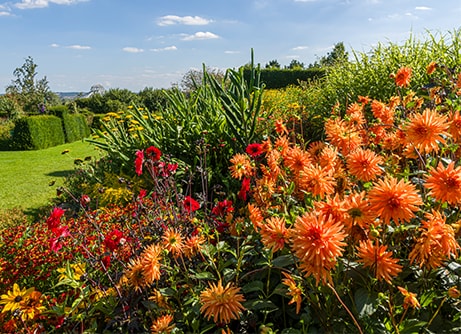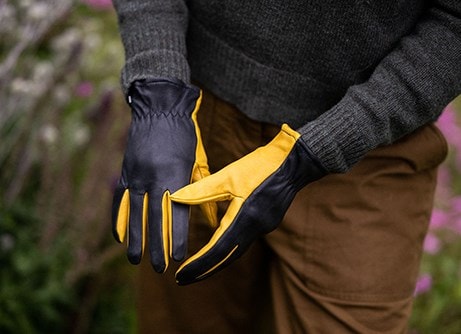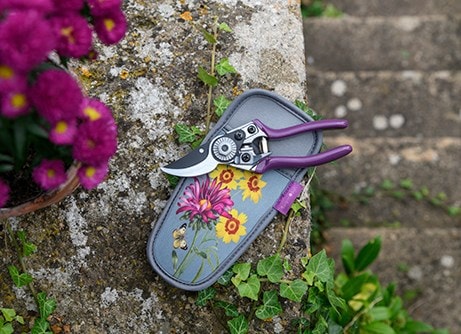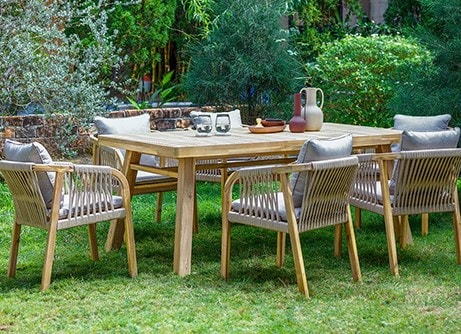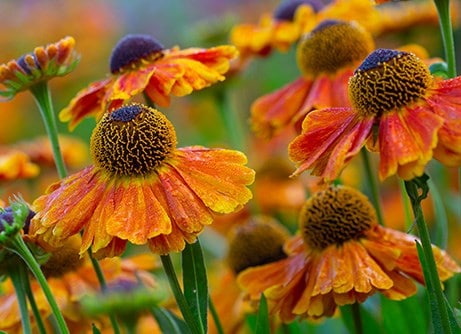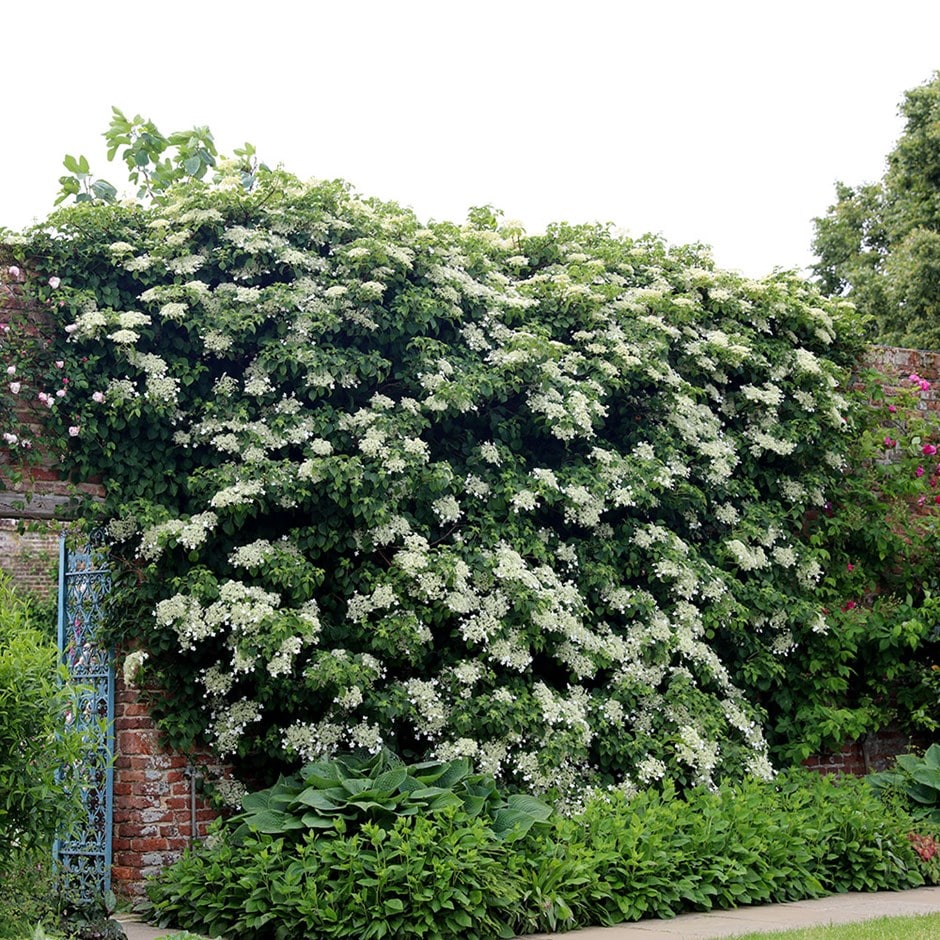
A tough and reliable climber, this self-clinging hydrangea is ideal for covering north-facing walls and fences where other plants find challenging.
Its dark green, broadly oval leaves create a dense backdrop, turning golden yellow in autumn before falling to reveal attractive peeling bark. In late spring and early summer, large, lacy white flowerheads up to 20cm (8in) across appear, attracting pollinators.
Although slow to establish, once settled, it grows vigorously and requires little maintenance beyond occasional pruning to control its spread. Hydrangea anomala subsp. petiolaris holds the RHS Award of Garden Merit, highlighting its exceptional garden performance.
Its dark green, broadly oval leaves create a dense backdrop, turning golden yellow in autumn before falling to reveal attractive peeling bark. In late spring and early summer, large, lacy white flowerheads up to 20cm (8in) across appear, attracting pollinators.
Although slow to establish, once settled, it grows vigorously and requires little maintenance beyond occasional pruning to control its spread. Hydrangea anomala subsp. petiolaris holds the RHS Award of Garden Merit, highlighting its exceptional garden performance.
How to care for Hydrangea anomala subsp. petiolaris:
To avoid dry conditions, and to ensure good soil contact around the rootball, we advise planting climbers at least 30cm (12in), and preferably 45-60cm (18-24in) away from the base of a wall or fence. An even larger distance should be maintained when planting climbers beside an existing tree or shrub.
Plant in moist, fertile soil and do not allow the soil to dry out while the plant is getting established. This hydrangea flowers on the previous season’s wood, so if you need to prune it back, do so in late autumn or early spring, but be warned that drastic pruning may restrict flowering the following year.
Plant in moist, fertile soil and do not allow the soil to dry out while the plant is getting established. This hydrangea flowers on the previous season’s wood, so if you need to prune it back, do so in late autumn or early spring, but be warned that drastic pruning may restrict flowering the following year.
Flowering period:
- Jan
- Feb
- Mar
- Apr
- May
- Jun
- Jul
- Aug
- Sep
- Oct
- Nov
- Dec
Eventual height:
15m
Eventual spread:
3m
Position:
Full sun / light shade
Rate of growth:
Average
Soil:
Moderately fertile, moist, well-drained soil
Hardiness:
Fully hardy
-
This climber is deciduous so it will lose all its leaves in autumn, then fresh new foliage appears again each spring.
-
Humans: Skin allergen; Pets: Harmful if eaten
Product options

9cm pot
£14.99
In stock
(shipped within 2-3 working days)
(shipped within 2-3 working days)

2 + 1 FREE 9cm pots
£29.98
£9.99 each
In stock
(shipped within 2-3 working days)
(shipped within 2-3 working days)

2 litre pot
was £22.95
now £16.06
In stock
(shipped within 2-3 working days)
(shipped within 2-3 working days)

10 litre pot | 80 - 100cm tall
was £99.99
now £79.99
available to order from autumn
Unavailable
1
Delivery options (pick your preferred option at checkout)
Standard Delivery£5.99
Named Day Delivery£10.99
Goes well with
Polystichum setiferum
soft shield fern
From £5.99
View options
| 2 litre pot | £13.99 |
|
| 3 × 2 litre pots | £31.49 |
|
| 9cm pot | £5.99 |
|
| 3 × 9cm pots | £11.87 |
|
View details
Sarcococca confusa
sweet box
From £9.99
View options
| 2 litre pot | £19.99 |
|
|
| 4.5 litre pot | 30 - 40cm tall | £59.99 |
|
|
| 3 × 2 litre pots | £47.99 |
|
|
| 7.5 litre pot | 40 - 60cm tall | £69.99 |
|
|
| 3 × 9cm pots | £22.99 |
|
|
| 9cm pot | £9.99 |
|
View details

